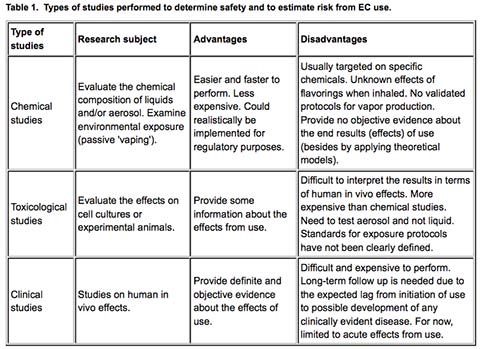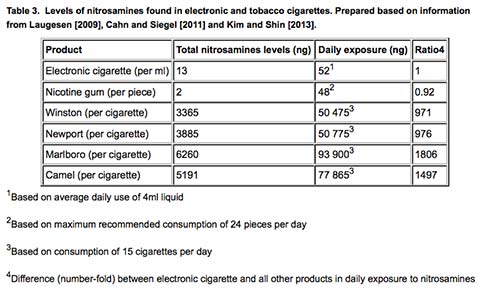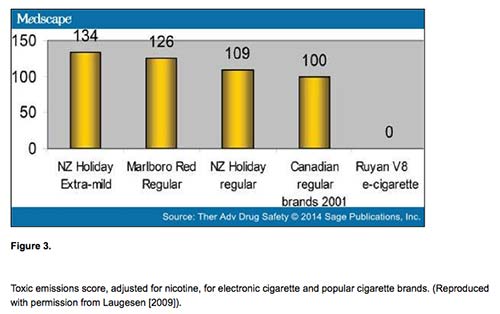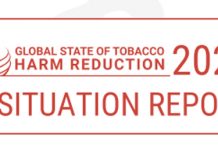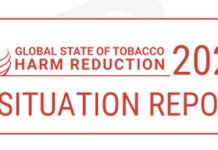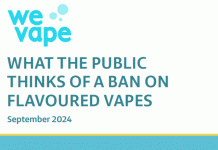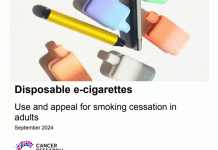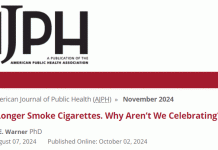Overview
What Dr. Farsalinos has done here is compile a list of up to date scientific studies carried out into the effects of vaping.
Introduction
Dr. Farsalinos recounts that stopping smoking is the best solution to smoking and that around 6,000,000 people a year die from smoking-related diseases. He notes that e-cigarettes now offer a third way by giving a far safer method of accessing nicotine.
He notes that awareness and use of e-cigs has occurred despite opposition from public health bodies and that this is likely due to the fact that the use of an electronic cigarette mimics the act of smoking compared to traditional forms of NRT.
Method
Dr. Farsalinos reviewed 41 medical studies from a database that were most relevant to electronic cigarette safety and risks. He included research looking at the ingredients of e-liquids (nicotine, PG, VG, microparticles and related matters).
Smoking
He notes that the dangers posed by smoking are directly related to the combustion process and the 4,000+ carcinogens contained in tobacco smoke.
He notes that nicotine, because it is associated with smoking, has become a taboo word – and dangers linked to smoking are wrongly associated with vaping.
He cites a number of sources: Nielsen 2013, McClernon 2006, Sahakian 1989 and Guslandi 1999, where beneficial effects of nicotine are noted in a medical setting by way of highlighting why it is wrong to demonise nicotine use.
Dr. Farsalinos gives examples of four investigations into vaping to demonstrate that nicotine use in e-cigarettes is such that an overdose is almost impossible to achieve because a) we absorb the nicotine slower than when smoking and b) vapers, like smoker, self-regulate and only use to the point where the craving for nicotine has been met.
The safety and risk profile of electronic cigarettes
Dr. Farsalinos points out that evidence is accumulating but more evidence is needed to add to the body of knowledge. He highlights how we have two sources of information, one from the users themselves and the other from experiments carried out on cell cultures in laboratories.
Chemical studies
- Laugesen found no acrolein, 55 times less acetaldehyde and 5 times less formaldehyde in vapour compared to cigarette smoke.
- Westenberger found very low levels of impurities in the liquid.
- Hadwiger found amino-tandalafil and rimonambant in very small amounts.
- Cahn & Seigel found TSNA levels to be 500-1400 lower in juice compared to smoke and similar to that found in NRT products.
- Pellegrino found trace particulates 6-18 times lower than in cigarettes
- Kim & Shin found TSNAs in the order of 1800 times less than that found in smoke.
- Etter found no ethylene glycol nor diethylene glycol.
- Goniewicz found trace levels of toluene, xylene, formaldehyde, acetaldehyde, cadmium, nickel and lead – the same as detected from an NRT inhaler and 120 times lower than smoke.
- Williams found micro-particles to be 880 times lower than in smoke but detected tin, copper, silver, iron, nickel, aluminium, chromium, lead (some at higher levels than in smoke).
- Burstyn found no evidence of anything at a level associated with health risks and could not replicated the detection of ethylene glycol or diethylene glycol.
Toxicological studies
Only a small number of these studies have been carried out and it is very difficult to translate the finding of what happens with cells in a pertri dish (in vitro) to what would happen in a body (in vivo).
Bahl found that from 36 different liquids 15 were moderately toxic and 12 were very toxic to cells. The flaws in this were that liquid not vapour was used and no comparison was made with smoke. Also, cells were left in constant contact with the liquid for 48hours – none of which replicates how the flavourings would evaporate, the concentrations present in the lungs nor the duration of contact.
The most toxic substance was not even used in concentrations found in electronic cigarettes.
- Farsalinos found that from 20 liquids only two exhibited any toxicity at all whereas he found that all smoke samples were highly toxic to cells. The most toxic vapour was still three times less toxic than smoke.
- Behar repeated the mistakes made by Bahl and also used concentrates rather than e-liquids.
- Robertson found that long term exposure to PG vapour had no toxic effects on monkeys.
- Werley found that long term exposure to PG vapour had no toxic effects on rats and dogs.
- Varughese found irritation to the airways but no damage from theatrical fog. This was not pharmaceutical grade PG and some samples had oils added.
- Wieslander found irritation to the airways but no damage from aviation PG. This was not pharmaceutical grade PG and had oils added.
- Sprague & Dawley found irritation in rat lungs from high PG doses but no lasting damage. This was not compared with smoke.
Clinical studies
The monitoring of hundreds of people over a long time frame provides a quality of information that is lacking from the in-vitro experiments.
The problems with this research is that only certain people put themselves forward to be monitored, individuals can lie or get things wrong and it is difficult to obtain a representative cross-section of society.
Findings to date have demonstrated that the use of electronic cigarettes is safe.
- Polosa found only mild side effects like sore throat in some people after a 24-month surve
- Farsalinos found the same during an eight-month survey
- Dawkins found the same.
- Etter found the same.
- Caponnetto found no bad health effects and considerable improvements in overall health.
- Bullen found no bad health effects and considerable improvements in overall health.
- Vardavas found that after a continuous use of 5 minutes the airways were more sensitive and nitric oxide levels were increased. No comparison was made with smoking effects.
- Palamidas found higher levels of carbon monoxide after prolonged use but this result has been challenged by three further surveys failing to replicate the results. No comparison was made with smoking effects.
- Schober found increased levels of nitric oxide but different to that found by Vardavas. No comparison was made with smoking effects.
Farsalinos has carried out two short-term studies into the effect of vaping on heart function and blood pressure. Both showed either no effects or no long-term effects.
